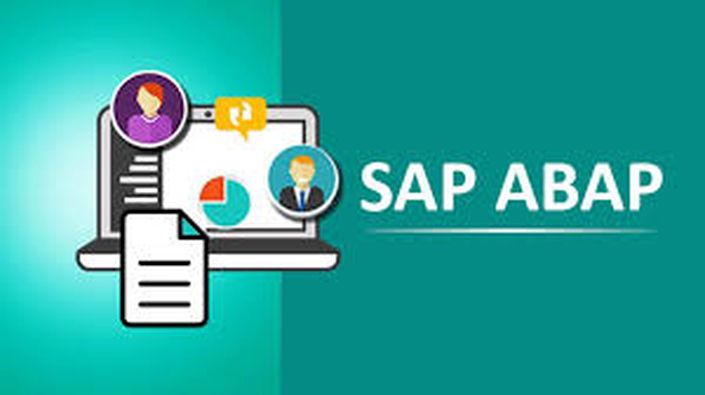
Tecniche di Programmazione SAP ABAP (Intermediate)
Il Corso per diventare uno sviluppatore ABAP (2/2)
Per chi è il Corso e cosa tratta
Il corso è rivolto a:
- Sviluppatori
- Programmatori in altri linguaggi
- Supporto IT
- Project manager
Obiettivo del corso e’ acquisire le tecniche della programmazione SAP ABAP creando programmi. Viene erogato da un Tutor tramite lezioni online, in formula weekend per 8 settimane.
N.B. Le video lezioni sono in inglese chiaro con sottotitoli in italiano.
Il Tuo Istruttore

- Introduction to ABAP
- Introduction to R/3 Architecture, Introduction to SAP R/3, ERP concepts and ABAP/4 introduction
- Complete Overview of R I C E F Components
- Basic Navigation (SAP GUI) Logins, T-codes, Types of Programs and Package Creation
- Fundamental concepts of the ABAP programming language
- ABAP runtime environment and Naming Standards
- General ABAP Concepts
- Creation of Parameters and Selection Screens
- Conditional Statements
- Data types and Data objects
- Common Control Statements and String operations
- Data Dictionary Concepts
- Introduction to Data Dictionary
- Domain and Data Element
- Tables
- ....Transparent Tables
- ....Pooled Tables
- ....Cluster Tables
- Table Creation � Top-Down Approach and Bottom-up-Approach
- Foreign Keys & Indexes
- Structures
- Views
- ....Types of Views
- ........Database View
- ........Projection View
- ........Maintenance View
- ........Help View
- Type Groups & Activation
- Search Helps
- Lock Objects (With Function Modules for Lock Requests)
- Internal Tables
- Working with Internal Tables Types of Internal Tables: Standard/Sorted/Hashed
- Body/Header Line Concept, Occurs 0 Concept
- Creating/Populating/Processing Internal Tables
- Processing Internal Tables: Process Operations Loop�Endloop. Read Statement Append LOOP
- CLEAR / Refresh / FREE INSERT / Modify / Delete / SORT / Describe
- Open SQL
- Introduction to Open SQL
- Work area: Implicit/Default
- Working with SELECT�ENDSELECT with different combinations
- Working with SELECT SINGLE * SQL Queries
- Using INNER JOINS, Left Outer Join, Using FOR ALL ENTRIES and INSERT / DELETE / MODIFY
- Modularization Techniques
- Subroutines, Macros , Includes
- Function Groups and Function Modules
- Reports: (Classical Reports )
- Events in Reports
- Message Classes Creation and Types
- Reports: (LDB - Logical Data Base)
- Introduction to LDB
- Events in LDB
- LDB Creation
- Reports: (Interactive Reports)
- Events in Reports
- At line Selection
- At User Command
- Menu Painter
- ALV Reports: (ABAP LIST VIEWER Reporting)
- ALV List and Grid Display
- Auto Field Catalog Merge
- ALV with Macros
- Block ALV display
- ALV with LOGO
- Hierarchical Display
- Popup Display
- Module Pool Programming
- Introduction to Screen Programming
- Screen Painter
- Creation of T-codes
- Table Controls
- Tab Strip Control
- Defining Sub screens
- Methods for transferring Data/ Uploads
- BDC Recording Method
- Session Methods
- Call Transaction Method
- Data Transfer Scheduling background and periodic jobs
- File Handling / Data Sets
- File Handling
- Creating/Appending Files in Application Server
- Reading Data From Application Server to Local PC
- SAP Script
- Smart Forms
- Introduction to SmartForms
- Basic Features of SmartForms
- Smartforms Architecture
- Simple Smartform Design
- Tables in Smartforms
- Smart Styles
- Tables and Templates
- Loops
- ALE & IDOC
- Introduction to ALE and IDOC
- Distributed Applications and Business Processes
- ALE Components and benefits
- ALE Architecture, Logical System, Message Type
- Segments, IDoc Type & IDoc
- ALE�s with IDOC
- RFC and IDOC with Standard Message types
- ALE�s with IDOC and RFC
- Standard ALE
- IDOC Steps to Send the Material from Outbound to Inbound Using MATMAS Message Class
- ABAP Objects (OOABAP)
- ABAP Objects (OOABAP) Concepts of object-oriented programming
- Use of simple classes and methods
- Understanding of object-oriented programming
- Advantages of Object Oriented Programming
- Components of a Class � Methods
- Methods and Attributes
- Visibility/Encapsulation
- ...Public, Private and Protected
- Attributes of Object Oriented Programming
- Creation of Global class and using it in a local program
- Use the global class created in a local program
- Accessibility of different sections of a class
- Classes & Objects
- Defining Local Classes, Components of a Class
- Attributes, Constructor, Inheritance, Polimorphisim
- Interfaces, Events and Exception Handling
- Interface: BAPI Business Application Programming
- Introduction to BAPI
- BOR and RFCs
- Custom BAPI Creation
- Data Uploads through the BAPIS
- Reports using BAPI
- BAdis Business Add Ins
- BAdi Enhancements
- BAdis � Business Add Ins Implementaion
- Transport System
- Transport Request Numbers
- How to release Transport Request
- STMS
- Miscellaneous Topics
- System Landscape (workbench Organization)
- 3 Way Landscape Systems DEV, QAS and PRD
- ASAP Methodology SAP Basic Services
- ABAP Coding Standards
- ABAP Coding Standards
- Project Coding Standards
- Designing Functional and Technical Specs
- Designing Functional Specs/Templates
- Designing Technical Specs/Templates
- Developing FS and TS Specs or Templates with Coding and Test Cases
- Performance tuning
- Runtime Analysis
- SQL Trace
- ABAP Debugging Techniques
- Control Break Statements
- Formatting Technique
- ABAP Debugging Techniques
- LSMW (Legacy System Migration Workbench Tool)
- Uploading the Data From PC using LSMW Batch Method
- Uploading the Data From PC using Direct Input Method
- Enhancements: (Customer Exits)
- Function Exits
- Screen Exits
- Menu Exits and Field Exits
- OOPS with ALV
- Introduction to OOPS With ALV
- Types of Containers, ALV Type Groups
- Fieldcatalog Propertie
- Layout properties Custom Containrs design
- Module Creation Using ABAP Objects and OOPS with ALV Grid Display
- Overview of Functional modules
- SD, MM and FICO Functional Flow
Domande Frequenti
Quando inizia e quando finisce il corso ?
Il corso è costituito da 62 video lezioni on-demand a rilascio graduale per 8 settimane.
Inizia quando lo decidi tu e lo puoi completare secondo i tuoi tempi.
Per quanto tempo ho accesso al corso ?
Hai accesso al corso per 12 mesi a partire dal momento della iscrizione.
Viene rilasciata un Attestato ?
Si al completamento delle lezioni,termine viene rilasciato un Attestato di Certificazione.